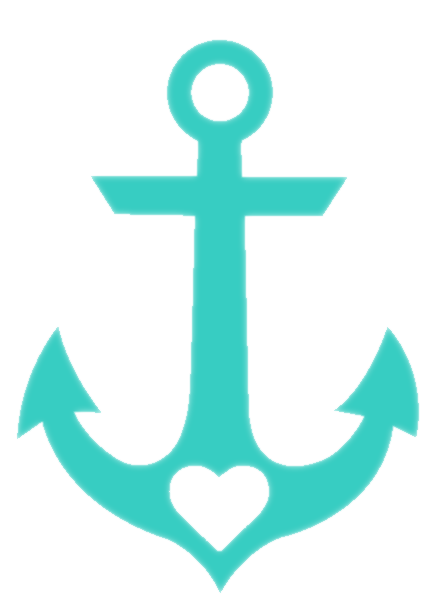The Sounds of Isla Isabel
Cruising to Isla Isabella off the Nayarit Coast
After spending a good portion of time in La Cruz and Punta Mita during January, we started getting antsy to move out further beyond the bay… see new sites, new anchorages. We also had some significant barnacles developing during a week long stint in the La Cruz anchorage, and we needed to get some fast moving water along the bottom to clean her up. Our friends on S/V Varuna (Ty and Hilary), who we met in the Guaymas Yard this year, were getting ready to head back north, back to Baja, and were planning to make a stopover at Isla Isabella, a very small island with minimal anchorages and an abundance of wildlife. The island is 60 nautical miles north of Punta Mita, and about 45 northwest of San Blas. (Check out out GPS Tracker Map Link to see exact location and satellite image).
The weather in the PV area had been very predictable, and there wasn’t anything daunting wind wise coming down the Sea of Cortez to seem threatening—- so we started out on a Sunday afternoon with a lively sail race with Varuna, from La Cruz out to the pass near Punta de Mita. For the record, we own, very fair and square… not because we are the faster boat or can point higher to windward, but Clif put on his tacticians hat, and made some good calls on boat maneuvering. WE did get some excellent photos of both boats sailing in the process. Like Ty said to me, as he copied the photos they took, “These are like gold…” Unless you have a fancy drone, or you race frequently, photos of the boat sailing are few and far between. You can seen them all scattered around our website!
That jolly little afternoon sail turned into a long two nights and a full day of bashing upwind, sailing hard, sailing fast, but doing some really long tacks up toward the Island, which lies about 65nm north of Punta Mita. We managed to double, almost triple that milage in our sailing. The strong winds persisted and made anchoring not an option when we got near Islabella on Monday evening. Clif and I ended up heaving-to (basically stalling out the boat with the sail configuration) and taking shifts sleeping about 6nm south of Isabella. On Tuesday morning, the wind clocked around from the south, and blew out the anchorage we were planning on coming into that morning. SO, we sailing a couple miles north and hove-to again, for the day, until it calmed down enough in the afternoon.
I was almost, ALMOST, encouraging Clif to just have bypass the island and sail back south, into mainland shore and anchor outside of San Blas…. I’m so glad I didn’t!! Once the wind calmed down on Tuesday night, we anchored slept, and had two very beautiful, fairly calm days exploring what turned out to be a mini-Galapagos… a pristine and fairly untouched place that harbors vast number of Blue-footed Boobies, Frigate Birds, Iguanas, Sea Turtles— not to mention an intense amount of humpback whale activity all around the island day and night (repetitive breaching, tail slapping, pec fin waving… you name it).
We ended up spending two days and two full nights anchored off of the northern side of the Monas, the rocky pillars you’ll see in the photos. We anchored in good sand, around 30-35’ deep. I was surprised that this anchoring spot didn’t show up in any of our guide books, despite the good holding a clear ocean floor. The south side of the Monas had rocks and coral to dodge, and the Southern Island Anchorage is notorious for being rocky and claiming anchors. We were also anchored closest to the largest, accessible Boobie colony nesting beach. On the beach, among the nests, was a permanent camp set up my biologist researchers from Mexico City. We had the pleasure of meeting several of them that started the research program 37 years ago! For that amount of time, they have been studying the population rise and decline, as well as a sociological focus of “family units,” relationships and conflict between family relationships in the birds.
The beach was surreal. The boobies made their nests and laid their eggs on the open sand, or in the beach grass and rocks. Many of the females had already laid eggs and were keeping them warm— some actually had small, very new, hatchlings that they still were sitting on. A few remaining males were waltzing (literally) about, doing their mating dance, trying to attract a straggling female who wasn’t already occupied with warming the eggs underneath her belly.
The first day we went ashore, I just took photos, and enjoyed the bird viewing. The second day I only recorded tape, bringing my recording equipment ashore. I felt like I had transcended to the ultimate birder… recording Boobie clucks and quacks, Frigate chatter, it all sounded very primitive, just like the island itself.
I created a short audio piece with my tape from the Isabella! This is a fairly rough form of it, and I would love to do a more heavily editing travel reporting piece with the tape in the future, but for now, you can enjoy the sounds of Isabella and those who inhabit her…
The voices you’ll hear, besides our own, are the researchers living on Isabella Dr. Hugh Drummond, Christina Rodriguez, Laura, and the other students who were kind enough to sit down, feed us coffee, and chat with us about their fascinating work.
“It’s a very hard working life, but it’s a privileged life.”
For more information on Isla Isabella and the Blue-Footed Boobies project with Dr. Drummond please visit the following links:
http://www.ecologia.unam.mx/isla_isabel/
http://web.ecologia.unam.mx/index.php/investigadores/hugh-drummond







